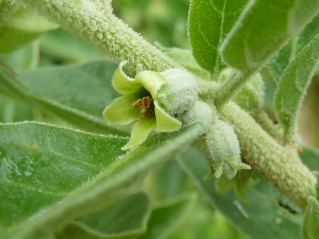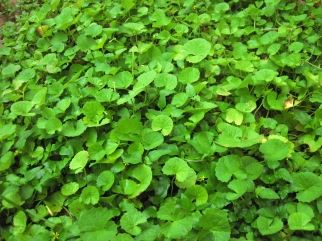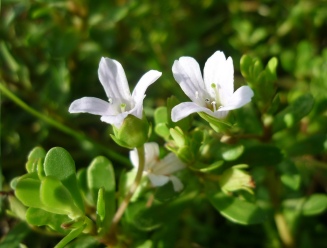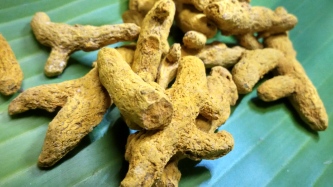Traditional Indian medicine or Ayurveda is ancient and dates back approximately 7000 years (Puri, 2003). Ayurveda has 8 different divisions which divide medicinal plants dependent on their actions. An important one is called the ‘rasayana tantra’. The word, ‘rasayana’, literally means the path that ‘rasa’ goes along (Rege et al., 1999). Where ‘rasa’ means ‘the primordial plasma’ and ‘ayana’ means ‘path’. In Ayurveda, the qualities of the rasa-dhatu (‘primary waters of the body’) influence the health of other ‘dhatus’ otherwise known as ‘tissues’ of the body. Therefore, any medicine that improves the quality of rasa should strengthen the well-being of all other tissues in the body. These are the rasayana medicines and are said to possess the powerful abilities of restoring youth, conferring longevity, and preventing and alleviating disease (Puri, 2003).
Rasayana herbs include the following; Amla, Arjuana bark, ashwagandha, bacopa, bala, bhringaraj, gotu kola, guduchi, holy basil, hoppea, shatavari, shilajit, and turmeric (Winston, 2007). These herbs can be taken for long durations without causing side effects, and in fact, indicated for longevity by the traditional cultures they were part of. Interestingly, these characteristics are shared with the ‘superior tonics’ in traditional Chinese medicine. I will now provide a summary of four of my favorite rasayana herbs from Ayurvedic medicine.
Ashwagandha

Ashwagandha is a small shrub and member of the nightshade family. The name, ‘ashwagandha’, can be translated as meaning ‘smells like a stallion’, and this refers to the smell of the root and the belief it bestows on the individual the strength of a stallion (Gardner et al., 2015). Scientific studies using experimental models have shown ashwagandha has numerous medicinal properties such as; anti-inflammatory (Chandra et al., 2012), anti-oxidant (Bhattacharya et al., 2001), neuroprotective (Kurapati et al., 2003), neuroregenerative (Nakayama et al., 2007), and anti-tumour effects (Widodo et al., 2007). There are a few human clinical trials of reasonable quality. For instance, one study found ashwagandha extract (300 mg root twice daily) reduced stress significantly versus a placebo in a study of 64 people. In another study, this time examining osteoarthritis, ashwagandha was applied in a formula as it often is in Ayurvedic medicine. The authors applied it alongside turmeric and boswellia to find it reduced pain and disability compared with the placebo group (Kulkarni et al., 1991). Taken together, these scientific studies and traditional knowledge of ashwagandha imply that it is a powerful medicine with the potential to rejuvenate and restore various systems of the body.
Gotu Kola

Gotu kola is a creeping medicinal herb native to tropical areas of India, Sri Lanka, and other parts of southeast Asia (Kuhn and Winston, 2000). Folk lore in Sri Lanka tells it increases longevity and lifespan, first observed from elephants who used to eat the gotu kola plant. Like ashwagandha, it has been found to have anti-oxidant properties and has support using experimental models for its use as a neuroprotective agent (Kumar and Gupta, 2003). Similar to other Indian and Chinese tonic herbs, it has been found to be able to suppress (Punturee et al., 2005) or stimulate (Jayathirtha et al., 2004) the immune system in models, depending on the context, therefore it has immunomodulatory activity. Like ashwagandha, it has neuroregenerative properties and is capable of stimulating nerve regrowth in models of nerve damage (Soumyanath et al., 2005). There is one human double blind placebo controlled study which demonstrated significant effect versus a placebo in the reduction of anxiety (Bradwejn et al., 2000). I expect further studies of this important rasayana herb will support its traditional application for a wide variety of diseases which include psoriasis, rheumatoid arthritis, cognitive decline, and several others.
Bacopa

Bacopa is a creeping medicinal plant that is found in damp, marshy areas throughout India (Russo et al., 2005). It grows white flowers and branches with bright green fleshly leaves. It is known as ‘Brahmi’, this word is derived from ‘Brahma’, who is known as the mythical creator God in one school of Hinduism. Bacopa has traditional use in Ayruveda as a medhya rasayana, a rejuvenative for improving the brain and nerves. It has been observed in vivo models to have anti-oxidant and anti-inflammatory activities (Bhattacharya et al., 2000; Channa et al., 2006). More precisely, anti-oxidant activity has been detected in the brain of models (Bhattacharya et al., 2000). This the authors hypothesised is responsible for cognition enhancing effects often seen in human trials (Roodenrys et al., 2002). These studies point to bacopa being useful in treating degenerative cognitive disorders such as Alzheimer’s. In the future, I expect more studies will confirm the medicinal potency of bacopa.
Turmeric

Turmeric is a perennial herb that has a short stem and big leaves which produce its characteristic oblong shaped, branched, brown coloured roots (Chattopadhyay et al., 2004). It is the root which contains curcumin which gives it a yellow colour and from which turmeric extract, which has medicinal properties, is extracted from. Turmeric is a tropical growing plant native to Southern Asia and notably is closely related to ginger, another medicinal herb. Turmeric has been shown using experimental models and human studies to possess anti-oxidant (Selvam et al., 2005), anti-inflammatory (Panahi et al., 2014), and anti-tumour (Kuttan et al., 1985) properties. Over 6 weeks it has been shown to decrease the pain of osteoarthritis in a double-blind placebo controlled trial (Panahi et al., 2014). Remarkably, in another well conducted study, it was shown to be effective at reducing depression (Lopresti et al., 2014). These human and experimental model studies support the traditional role of turmeric as a highly versatile rasayana herb capable of acting to improve seemingly unrelated diseases.
Conclusions
There is now an increasing body of scientific evidence to support the notion of the ‘rasayana’ herb, a powerful group of rejuvenative tonic herbs used in the ancient system of Ayurvedic medicine. I think this classification of herbs could be extended to include the ‘superior tonics’ of traditional Chinese medicine and several Western herbs. Rasayana (restorative) tonic herbs are a broad classification, but they must be; 1) non-toxic and non-habit forming even long term, 2) support and restore the function of organs or systems with time, 3) provide protection against disease and ageing. These characteristics are those of the ideal medicine.
References:
Bhattacharya, A., S. Ghosal, and S. K. Bhattacharya. “Anti-oxidant effect of Withania somnifera glycowithanolides in chronic footshock stress-induced perturbations of oxidative free radical scavenging enzymes and lipid peroxidation in rat frontal cortex and striatum.” Journal of Ethnopharmacology 74.1 (2001): 1-6.
Bhattacharya, S. K., et al. “Antioxidant activity of Bacopa monniera in rat frontal cortex, striatum and hippocampus.” Phytotherapy Research 14.3 (2000): 174-179.
Bradwejn, Jacques, et al. “A double-blind, placebo-controlled study on the effects of Gotu Kola (Centella asiatica) on acoustic startle response in healthy subjects.” Journal of clinical psychopharmacology 20.6 (2000): 680-684.
Chandra, Sangita, et al. “Evaluation of anti-inflammatory effect of ashwagandha: a preliminary study in vitro.” Pharmacognosy Journal 4.29 (2012): 47-49.
Chandrasekhar, K., Jyoti Kapoor, and Sridhar Anishetty. “A prospective, randomized double-blind, placebo-controlled study of safety and efficacy of a high-concentration full-spectrum extract of ashwagandha root in reducing stress and anxiety in adults.” Indian Journal of Psychological Medicine 34.3 (2012): 255.
Channa, Shabana, et al. “Anti-inflammatory activity of Bacopa monniera in rodents.” Journal of ethnopharmacology 104.1 (2006): 286-289.
Chattopadhyay, Ishita, et al. “Turmeric and curcumin: Biological actions and medicinal applications.” CURRENT SCIENCE-BANGALORE- 87 (2004): 44-53.
Gardner, Tanya, and A. H. P. Level. “The Characteristics, Benefits and Application of Ashwagandha in the West.” Image 2 (2015): 2.
Jayathirtha, M. G., and S. H. Mishra. “Preliminary immunomodulatory activities of methanol extracts of Eclipta alba and Centella asiatica.” Phytomedicine 11.4 (2004): 361-365.
Kuhn, Merrily A., and David Winston. Herbal therapy and supplements: a scientific and traditional approach. Lippincott Williams & Wilkins, 2000.
Kulkarni, R. R., et al. “Treatment of osteoarthritis with a herbomineral formulation: a double-blind, placebo-controlled, cross-over study.” Journal of ethnopharmacology 33.1-2 (1991): 91-95.
Kurapati, Kesava Rao Venkata, et al. “Ashwagandha (Withania somnifera) reverses β-amyloid 1-42 induced toxicity in human neuronal cells: implications in HIV-associated neurocognitive disorders (HAND).” PLoS One 8.10 (2013): e77624.
Kuttan, Ramadasan, et al. “Potential anticancer activity of turmeric (Curcuma longa).” Cancer letters 29.2 (1985): 197-202.
Lopresti, Adrian L., et al. “Curcumin for the treatment of major depression: a randomised, double-blind, placebo controlled study.” Journal of affective disorders 167 (2014): 368-375.
Nakayama, Natsuki, and Chihiro Tohda. “Withanoside IV improves hindlimb function by facilitating axonal growth and increase in peripheral nervous system myelin level after spinal cord injury.” Neuroscience research 58.2 (2007): 176-182.
Panahi, Yunes, et al. “Curcuminoid Treatment for Knee Osteoarthritis: A Randomized Double‐Blind Placebo‐Controlled Trial.” Phytotherapy Research 28.11 (2014): 1625-1631.
Punturee, Khanittha, et al. “Immunomodulatory activities of Centella asiatica and Rhinacanthus nasutus extracts.” Asian Pacific Journal of Cancer Prevention 6.3 (2005): 396.
Puri, Harbans Singh. Rasayana: ayurvedic herbs for longevity and rejuvenation. CRC Press, 2003.
Rege, Nirmala N., Urmila M. Thatte, and Sharadini A. Dahanukar. “Adaptogenic properties of six rasayana herbs used in Ayurvedic medicine.” Phytotherapy Research 13.4 (1999): 275-291.
Roodenrys, Steven, et al. “Chronic effects of Brahmi (Bacopa monnieri) on human memory.” Neuropsychopharmacology 27.2 (2002): 279-281.
Russo, A., and F. Borrelli. “Bacopa monniera, a reputed nootropic plant: an overview.” Phytomedicine 12.4 (2005): 305-317.
Selvam, R., et al. “The anti-oxidant activity of turmeric (Curcuma longa).” Journal of Ethnopharmacology 47.2 (1995): 59-67.
Soumyanath, Amala, et al. “Centella asiatica accelerates nerve regeneration upon oral administration and contains multiple active fractions increasing neurite elongation in‐vitro.” Journal of Pharmacy and Pharmacology 57.9 (2005): 1221-1229.
Veerendra Kumar, M. H., and Y. K. Gupta. “Effect of Centella asiatica on cognition and oxidative stress in an intracerebroventricular streptozotocin model of Alzheimer’s disease in rats.” Clinical and Experimental Pharmacology and Physiology 30.5‐6 (2003): 336-342.
Widodo, Nashi, et al. “Selective killing of cancer cells by leaf extract of Ashwagandha: identification of a tumor-inhibitory factor and the first molecular insights to its effect.” Clinical Cancer Research 13.7 (2007): 2298-2306.
Winston, David, and Steven Maimes. Adaptogens: herbs for strength, stamina, and stress relief. Inner Traditions/Bear & Co, 2007.